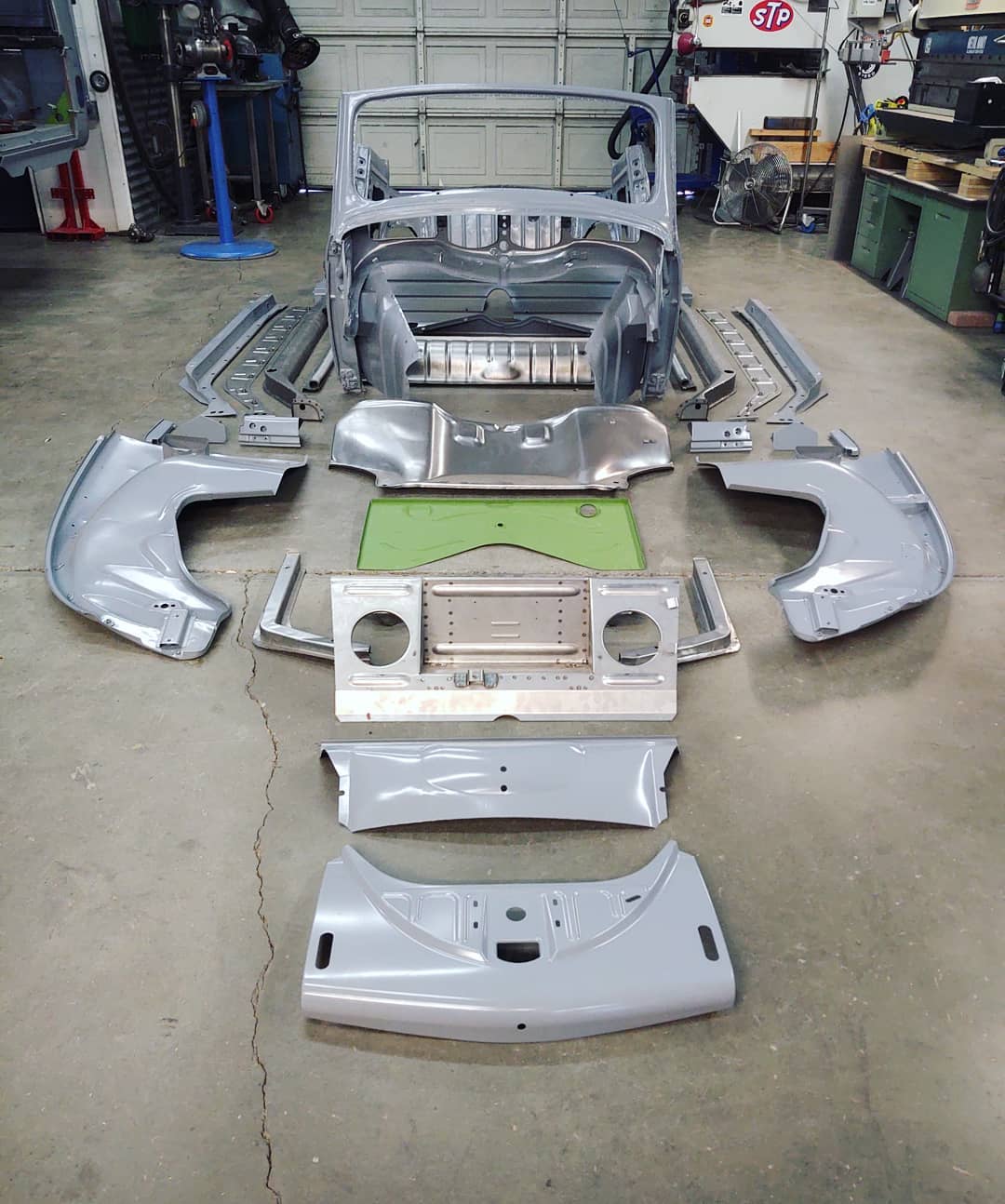The Ship of Theseus is an old thought puzzle and was discussed by ancient philosophers such as Heraclitus and Plato. The story is that the ship sailed by the hero Theseus in a great battle was kept in a harbor as a museum piece and as the years went by some of the wooden parts began to rot and were replaced by new ones; then, after a century or so, every part had been replaced. The question then is whether the "restored" ship is still the same object as the original? If it is, then suppose the removed pieces were stored in a warehouse, and after the century, technology was developed that cured their rot and enabled them to be reassembled into a ship. Is this "reconstructed" ship the original ship? If it is, then what about the restored ship in the harbor still being the original ship as well? Or is neither now the original ship?
What's this all got to do with old VW's I hear you ask. Well I've recently seen a few old VW's being 'restored' using heaps of new parts. With various parts manufacturers such as Virtanen, Wolf Parts, Blech-Manufaktur, BBT and others, it's now possible to reconstruct an old VW using mostly new parts. And with prices of old VW's risen to collector car standards, it can be cost effective to employ skilled craftsmen to create even those parts that are not available. Of course it's a huge blessing to have these parts available to us, especially when parts of our cars have been subjected to accident damage, bad repairs from the past, or just simply rusted away. But at what point do all these new parts mean that the car is no longer the original car?
In the original thought puzzle, the philosophers suggested that the ships identity changed over time, gradually losing it's originality and eventually the ship becomes a replica of itself. This is an interesting idea, because in the world of classic cars, replicas are usually a devisive subject. Replica's of cars that no longer exist are usually very much accepted, but other replicas generally have a lower status. Often for example, clubs of a particular make and model will only cater for original cars, not for replicas.
Then there is the question of value. What makes a rare car valuable? If a car has been restored using loads of new parts and is now totally rust-free and 100% 'correct', perfect paint and looks as though it's just come from the showroom floor, but is now essentially a 'replica' of itself - what is it's value against an original car that has rust issues and needs work. The dream for most is to find an original 'patina' car that is original and needs little or no restoration work, but these cars are definetly in the minority (excluding fake patina cars which are an entirely different argument). Does the kind of restoration have a bearing on the cars value? A sympathetic restoration trying to retain as many original parts as possible vs a replace everything possible restoration? How do NOS panels fit into the whole picture? These NOS panels are original VW parts made during the period, is this better/more original than using panels made today? and what about when both are in fresh paint and nobody can tell the difference anyway?
Of course I'm not suggesting that cars that need a restoration shouldn't be restored, but we are now in a position where it is so much easier to replace original panels than to repair them, whereas in the past we had no option but to repair. There's a saying 'they're only original once' - so maybe it doesn't matter how the restoration is done if it's no longer original anyway?

https://www.instagram.com/p/CKNwrKgp5CIumDNGbNM6htdE9edruHHzKWSp0E0/

https://www.instagram.com/p/CJ3wkRsJcaf/?hl=en